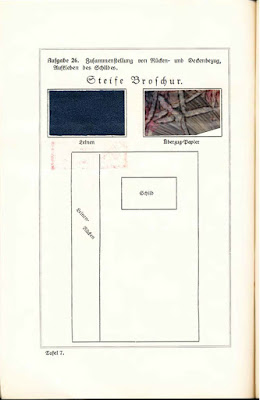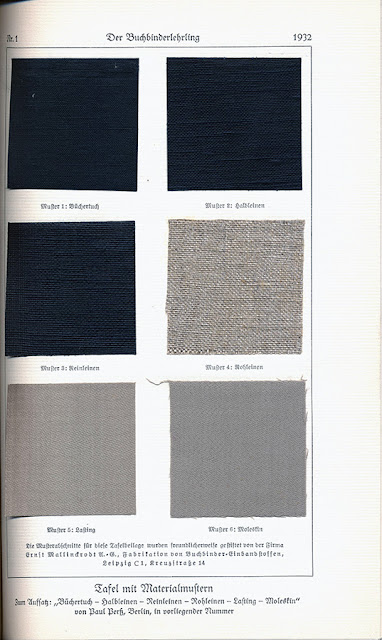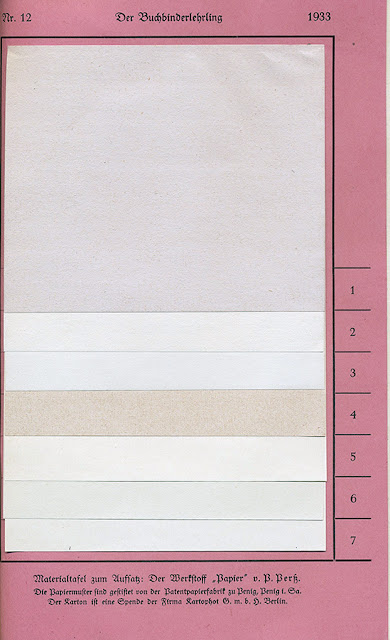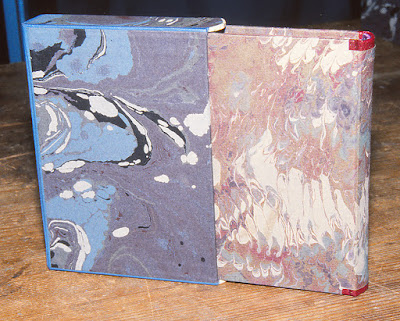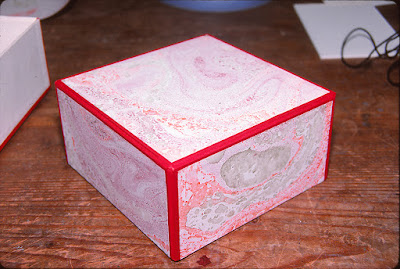Ernst Collin edited and published Deutsche Einbandkunst, the catalog for the Jakob Krauße Bund's (J-K-B) exhibition that was held in the Weißer Saal of Berlin’s Schloßmuseum September-October 1921. The catalog featured essays by Ernst (2), Paul Kersten (2), G.A.E. Bogeng, and others. Ernst’s essays were “Wer ist ein Bücherfreund” (“Who is a Bibliophile”) and the uncredited “Über Bucheinbände” (“About Bookbindings”) describing the various structures hand bookbinders applied and what viewers would encounter in the exhibit. Other essays provide context to the J-K-B of which Kersten was director and other aspects of the exhibit such as bindings by Jakob Krauße drawn from various libraries. Displayed bindings are minimally described in the checklist that is divided into several parts: Deceased members Georg Collin (12), Eduard Ludwig (15), Fritz Nitsch (1) and active members including Otto Dorfer (24), Paul Kersten (42), Otto Pfaff (14), and Hugo Wagner (12). In total, there were several hundred bindings and other works. The catalog also contains forty pages of advertisements for antiquarians and booksellers, binderies, printers, and purveyors to the trade. Ernst wrote several articles about this exhibition in other publications for the book trades and general public.
The catalog was produced in two versions, a deluxe of twenty unbound copies on handmade wove rag (IXX), with the remaining copies (21-2,000) on a machine-made wove rag paper. My copy of the deluxe edition (Nr. XX) was bound in an unsigned ¼ leather binding with cloth sides and gilt top edge.
Of interest is that the decorated wrappers for the regular edition were made by ten different decorated paper makers. Below some examples
 |
The pastepaper example illustrated above from my collection (Nr. 1887)
was made by Xaver Wittmann, Abt. B.B.K., Konstanz a. R[hein]
who provided 200 pieces. |
I was recently able to acquire two more copies of the catalog with different decorated papers for the wrappers.
 |
Copy #1939, paper also made by Xaver Wittmann,
Abt. B.B.K., Konstanz a. B[odensee]. |
 |
Advertisement for Xaver Wittman from the catalog.
They also sold "hand painted" book cloth, in addition to decorated
papers for covering and endpapers. |
 |
Copy # 375, paper made by Beyer-Preußer & Glasemann,
Niedernhausen im Taunus. |
.
 |
| Advertisement for Beyer-Preußer & Glasemann from the catalog |
"Quality decorated papers of all kinds for covering and endpapers
using our own proprietary techniques." |
 |
| Colophon with all the papers and their makers. |
Below, all advertisers in the catalog. In addition to some of the exhibitors, the advertisers included booksellers, publishers, hand- and large trade binderies, and suppliers of all sorts. Download from here.
%20sm%20b.jpg)
%20sm.jpg)
%20sm.jpg)















